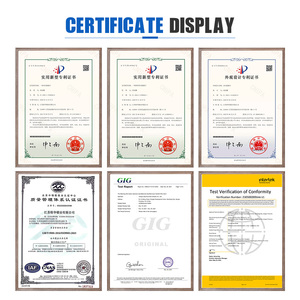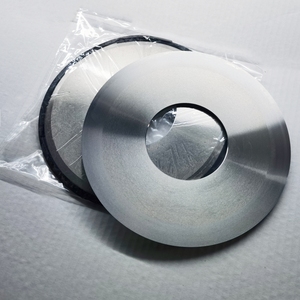
All categories
Featured selections
Trade Assurance
Buyer Central
Help Center
Get the app
Become a supplier

(14220 products available)



























Textile blades are sharp-edged metal components used to cut and trim various kinds of fabric, including wool, silk, cotton, and fleece. They come in a wide range of sizes and shapes to accommodate different cutting requirements. Some textile blades have serrated edges for cutting through thicker materials, while others have straight razor edges for precision work. Knives with rounded tips are designed to protect against fraying and damaging textiles, while those with pointed tips offer greater accuracy.
Material
Textile cutting blades are made of carbon steel, stainless steel, alloy steel, and some other materials. Alloy steel is more durable, so it can ensure longer lifespan and improved efficiency.
Size and length
The size and length of the blade will affect the thickness and types of materials it can cut. The bigger and longer the blade is, the thicker and broader the materials it can handle.
Sharpness and edge type
An unsharp blade will fail to cut through the materials. Textile materials usually have a fabric texture that is really tough. So, blades with serrated edges can be an option. Serrated edges can provide better control and precision cutting.
Coating
The coating of the blade is designed to reduce friction and heat. Blades with coatings can help extend the product lifespan and make cutting easier. Common coatings include Teflon and titanium.
Proper maintenance is vital for both prolonging the service when using and ensuring the cutting precision of the blades.
Cleaning the textile blade
It is essential to clean the blades periodically to prevent the build-up of debris, dust, and fabric residue. It can impact the cutting quality and precision.
Users can soak a piece of cloth in the lubricant and gently wipe the blade with the cloth. The lubricant can effectively clean the blade and prevent corrosion.
Lubrication
Regular lubrication can keep the cutting operation smooth and minimize friction and heat. It can also reduce the risk of damage and wear to the blade edges.
Use a small amount of cutting oil or lubricant and apply them to the blade edges and moving parts after cleaning the blades.
Storage
When not in use, store the blade in a dry and clean environment with breathable storage bags or containers. Keeping the blade away from humidity and dust can effectively prevent rusting and damage.
Apparel industry production
A textile blade can cut fabrics for clothing, including T-shirts, pants, coats, and underwear. It can quickly and precisely cut large rolls or sheets of fabric into smaller pieces. This helps to ensure that clothing production is both efficient and cost-effective.
Quilting and textile crafts
In the quilting and textile crafts industry, a textile blade can be used to cut various types of fabrics such as cotton, flannel, and wool. This allows for the creation of unique quilts and textile art pieces. Precision cutting with a blade helps to give these projects a polished and professional look.
Home decor and upholstery projects
A textile cutting machine can also be used to cut fabrics for home decor and upholstery projects. It can cut materials like velvet, leather, and linen to make products such as curtains, cushions, and furniture upholstery. The machine ensures accurate cutting, which is essential for achieving a high-quality finish.
Automotive and marine applications
Textile blades can be used in automotive and marine applications. For example, in car manufacturing or boat building, they may be used to cut specialized textile materials. These could include sound insulation, interior linings, or custom seat covers. Precision cutting is crucial in these applications for a proper fit and easy assembly.
Textile recycling and waste management
Textile blades can also be used in textile recycling and waste management. When recycling used textiles or managing textile waste, the blades can cut these materials into smaller pieces. This assists with the sorting and processing of textiles for recycling.
Operating environment:
Apparel production facilities comprise a variety of distinct departments, such as cutting, sewing, and finishing. Blades intended for use in the cutting department may need to possess characteristics tailored to specific materials, such as cloth, as well as other factors like humidity and temperature.
Blade sharpness and durability:
Textile blades are available in varying degrees of sharpness and durability. It is essential to strike a balance between sharpness and longevity to meet production requirements while minimizing blade replacement and maintenance.
Compatability:
Apparel manufacturing often utilizes a wide range of machines. Considering the compatibility of the blade with the existing equipment is crucial to ensuring smooth operation and effective cutting.
Cost-effectiveness:
Cost considerations are important, but it is crucial to focus on the overall cost-effectiveness rather than simply the initial purchase price. Investing in high-quality textile machine blades that offer durability, performance, and longevity can lead to significant cost savings in the long run.
Focus on supplier experience and reputation:
When selecting textile machine blades, it is important to consider suppliers with extensive industry experience and a good reputation. This can ensure the quality and reliability of the chosen blades.
Q1: What are some recent trends in textile cutting blades?
A1: The global textile blade market is majorly driven by the increasing use of textile blades in the apparel and home furnishing industries. Recently, the demand for industrial-scale production has shifted toward blades that provide more precise cuts, such as the round cutting blade, spiral cutting blade, and scalloped cutting blade.
Q2: What is the market for textile blades?
A2: The global textile blade market is estimated at USD 835.42 million in 2023 and is projected to reach USD 1,579.18 million by 2028, growing at a CAGR of 13.66% during the forecast period.
Q3: What are the challenges in the textile blade market?
A3: While the demand for textile blades is expected to grow, the market may face challenges. The increasing popularity of laser cutting technologies, for example, could present competition since these technologies don't require physical blades. Furthermore, cutting blades are small and easily misplaced, making them hard to keep track of.